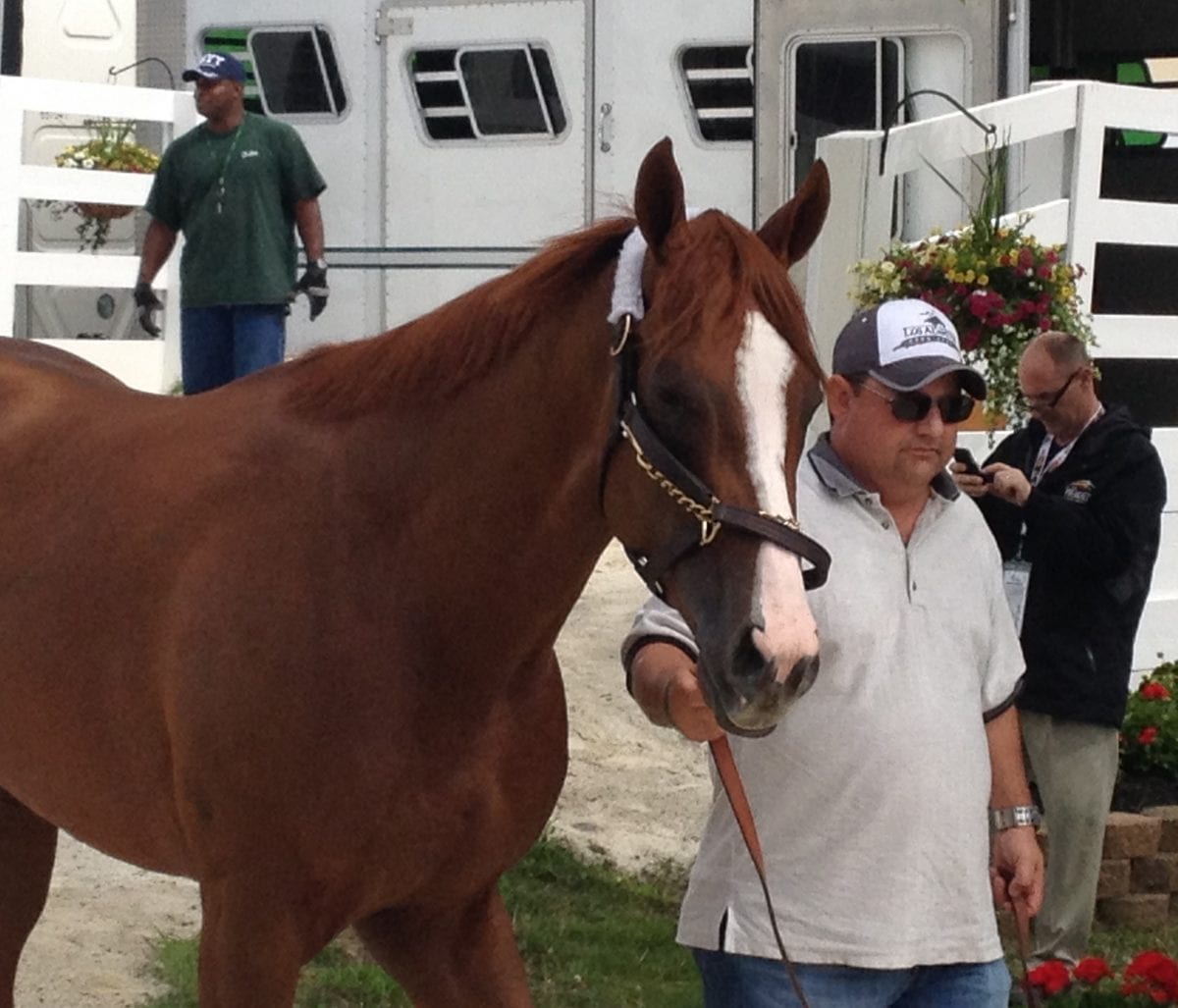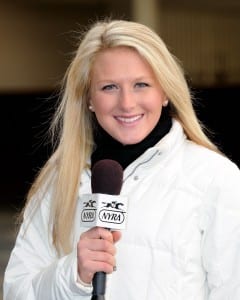Marylander Maggie Wolfendale has for the last four years served as the paddock analyst for the New York Racing Association. She’s become a familiar presence to handicappers of the big races at Belmont, Saratoga, and Aqueduct, and her insights into how the horses look and act in the paddock have led to many a winning wager. The daughter of trainer Howard Wolfendale, Maggie also did on-air stints for Colonial Downs and the Maryland Jockey Club; and she has galloped and trained horses. We visited with her to discuss what she’ll be looking for on Saturday.
THE RACING BIZ: “Paddock analyst” is not a job description that every track has. How do you see the mission of your job?
MAGGIE WOLFENDALE: The mission of my job is to inform people who may not know how to look at the physicality of the horse. Sometimes, TV doesn’t do justice to what you can see in the paddock. I try to expand on what is in the form and answer questions that maybe aren’t in the running lines, for example [if the horse is trying] first time turf or first time going long.
TRB: One of the things that Andy Serling has cited as a positive attribute of yours is a willingness to take a stand even at the risk of being wrong. Is that difficult, risking being wrong in such a public forum?
MAGGIE WOLFENDALE: I have no problem with being wrong. I stick true to myself and what my opinions are.
TRB: When you’re looking at the horses before the Belmont — a 1 1/2 mile race that’s much longer than the normal race — are there particular things you’ll want to see in a horse that will tell you this is the kind of horse who can get a 12-furlong distance?
MAGGIE WOLFENDALE: As far as looking at them conformation-wise, routers are bigger, have a lot more scope to them — not stocky and blocky like sprinters usually are. And you ask: Do they look like their pedigree? Because if not, their pedigree might not be as useful a gauge as it is for a horse that looks like his pedigree. In terms of behavior, the more laid-back horses are the ones that have more success getting 1 ½ miles. Last year, for example, Palace Malice was cool as a cucumber.
That said, some horses always are hot but still run well, and you have to take that into account. It helps to know how they usually look and behave. For example, a couple years ago, Uncle Mo was the buzz horse. Todd Pletcher found races in Florida he could win and then he came to New York for the Wood. I think I said something like, “He doesn’t quite measure up to the resume he brings forth.” [Note: Uncle Mo finished third in the Wood at 1-9 odds.]
TRB: This year’s buzz horse, of course, is California Chrome. What’s your impression of him so far?
MAGGIE WOLFENDALE: The buzz around him is a lot stronger than it was around I’ll Have Another. Progressively, he’s getting over the track better and better. They do put a lot of miles [of gallops] into him. He’s a very intuitive and rateable horse.
TRB: What’s Belmont day going to be like for you?
MAGGIE WOLFENDALE: This year’s Belmont is going to be kind of a new experience for everyone. It’s going to be a star-packed, action-packed day, and I’ll do twice as much prep as I would for a normal day.
TRB: Finally, a recent proposal by Maryland Jockey Club president Tom Chuckas to lengthen the time from the Derby to the Preakness and from the Preakness to the Belmont — ideally, to a month from each to each — has gotten a lot of play recently. What’s your take on that?
MAGGIE WOLFENDALE: Times change, and while I think [winning the Triple Crown] is such a feat to be done, the thing is, trainers train their horses so much differently. They’ve had to because the breed has gotten more delicate. I think it would benefit, from a financial standpoint, each place.







